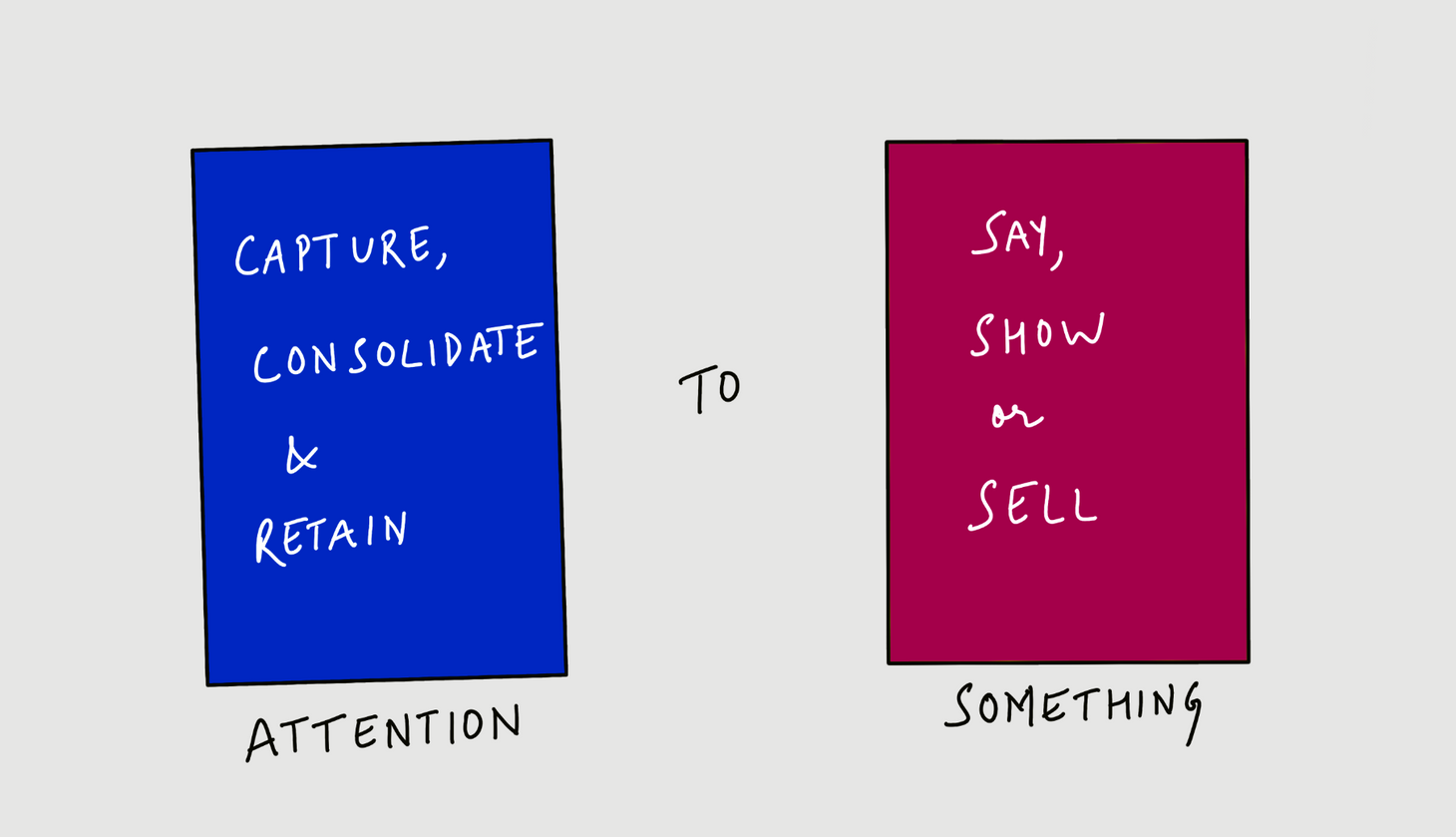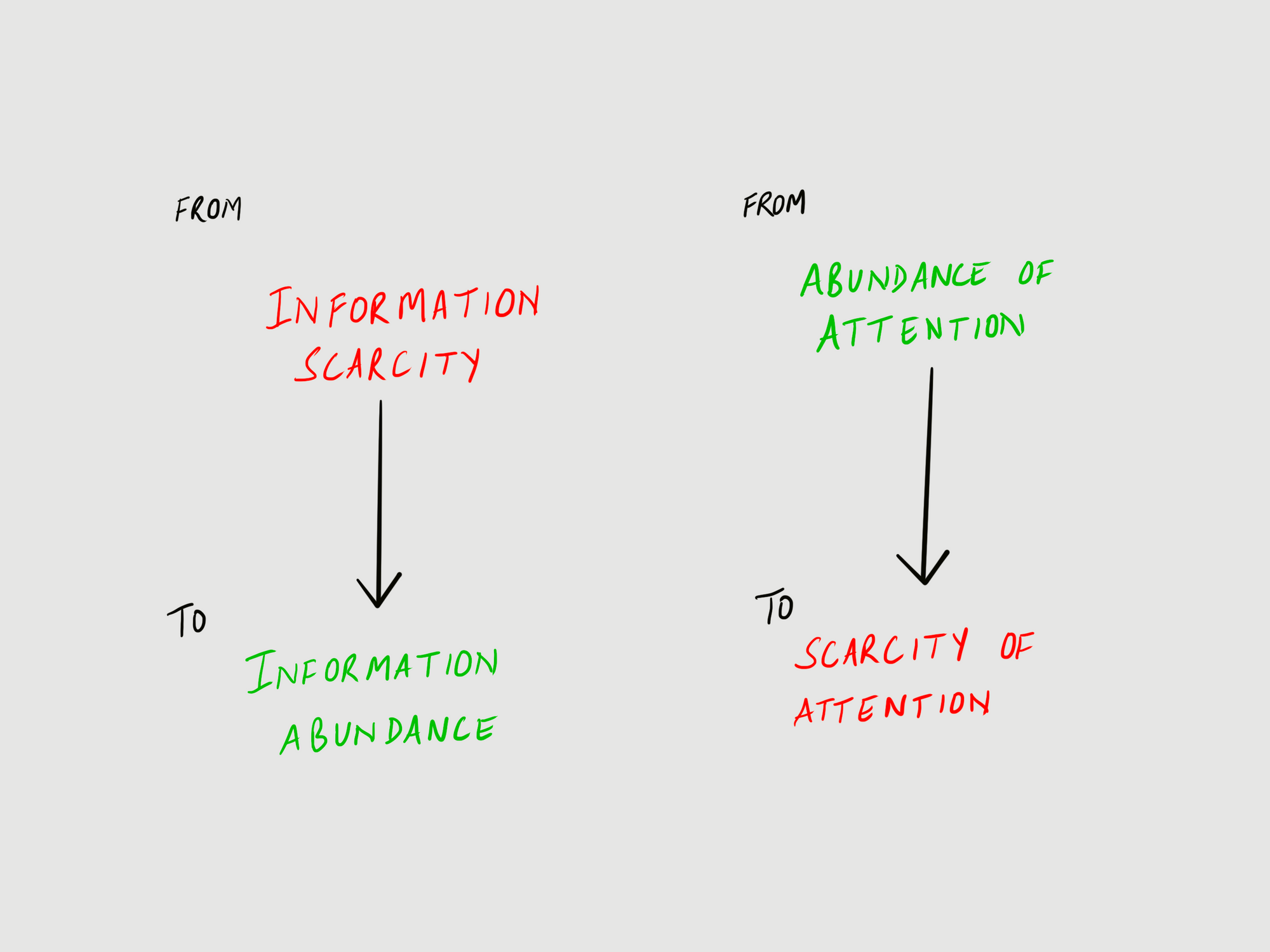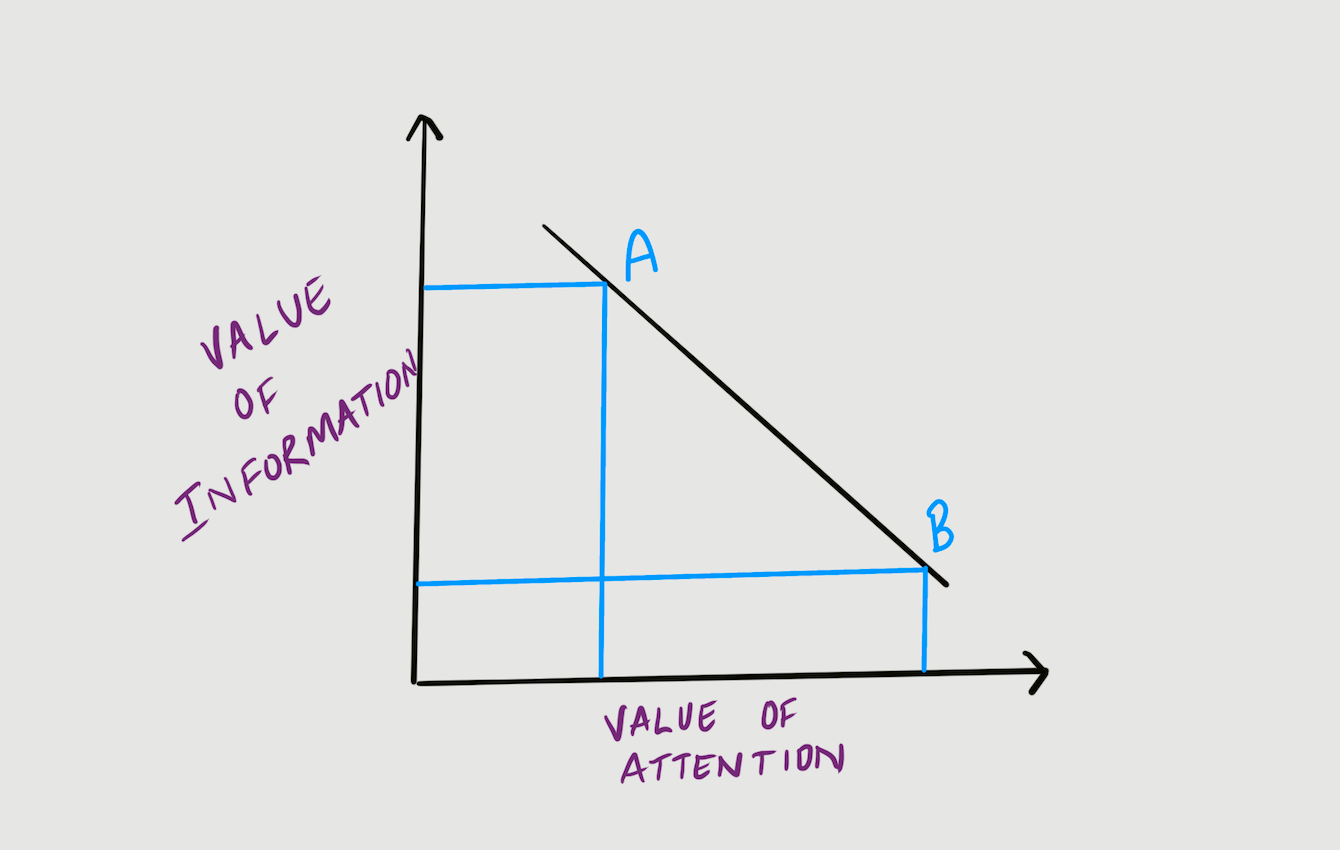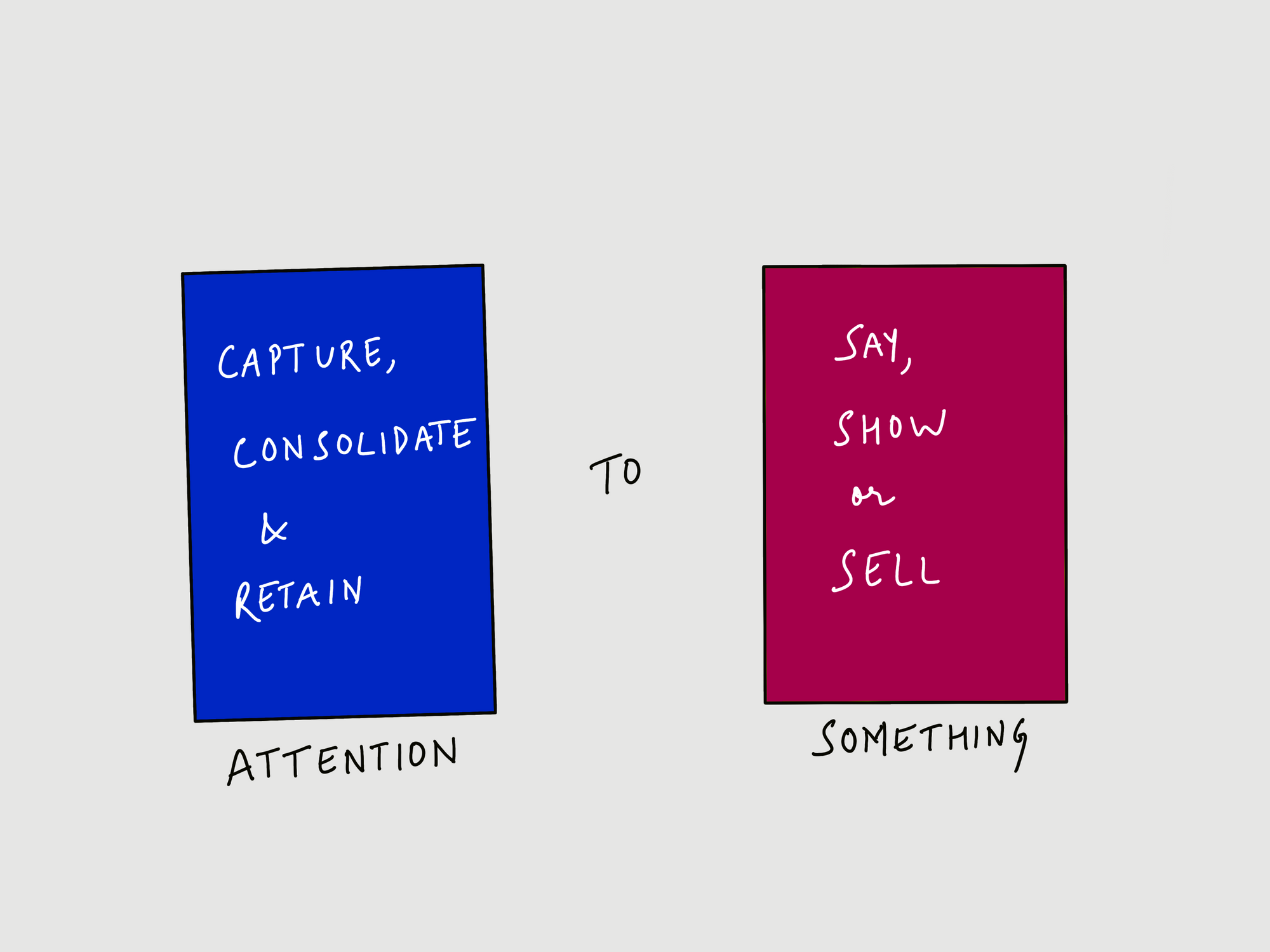Information, Attention, and Money
The rationale behind the move from a materials-based-economy to an attention-based-economy; and what us users must do about it...

Table of Contents
Hey there,
I hope you've been enjoying the weekly article. Do consider sharing STEBI with those you think would like it. :)
Today's article talks about the attention economy. Earlier, businesses were valued by investors based on their revenue and profits. In the digital age, valuations are based on number of users. The last 15-20 years have seen the world move on from a materials-based-economy, to an attention-based-economy.
This article will explain the rationale behind this switch from an economic and business strategy angle, while encouraging the reader to be more deliberate with directing their attention to ensure better decision-making.
I hope you'll enjoy it. :)
Quick links to parts of this article -
Information and attention
With the proliferation of the internet, the world has gone from information scarcity, to information abundance.
Pre-internet times were different. Societies mostly had too little information. Books were revered. Newspapers, devoured. TV, radio, and community cinema were primary forms of entertainment, and received extensive interest from society.
But now, through the internet, everyone has access to all the information of the world. Everyone now is both a consumer and creator of information. This has led to an insane amount of data being generated on the internet, every minute.
Information (by its very nature) consumes attention. School teachers would often say - "Pay attention!" One pays money to acquire a commodity, and pays attention to acquire information.
Now, the attention we have at hand, is never enough to consume the enormous (and ever increasing) amount of information being thrown at us.
Relative to the information available, attention has become the scarce commodity.

Comparing their value
This graph is based on basic demand and supply economics - too much supply of something, in comparison to demand, reduces its value.
So the value of information and attention can be compared thus -

At point A, one can see that the value of information is high, while the value of attention is low. This depicts the pre-internet times. When the supply of information was much lower than people's appetite for it.
At point B, the value of information is low, while the value of attention is high. This is true for the times we live in today; which is why we see so many people vying for public attention through the internet.
Why attention drives sales
Anyone with something to say, show, or sell - needs somebody's attention.
That literally covers everybody.
So, those who don't have public attention, want to acquire it. Those who have it sporadically, want to consolidate it. And those who have it, want to retain it (and use it).

Capturing attention, in economic terms can be equated with collecting demand. By collecting demand, the owner of the attention, is well positioned to supply products or services to their audience. Additionally, they become valuable to someone who wants to supply to this audience.
When done for oneself, it's marketing. And when done for someone else, it's sponsorship.
Brands now work hard to increase the attention they get on the internet. In marketing terms, its called widening the sales funnel. The wider the funnel, the more will flow through. So, as the size of the audience increases, out of them, the number of people willing to become paying customers also increases.
Celebrities like Virat Kohli, Deepika Padukone, Cristiano Ronaldo - who have plenty of public attention, are valuable to suppliers whose products cater to those audiences. And, this isn't even a new phenomenon, even in pre-internet times there were ads on TV, radio and print media. The only difference now is, coherent with the times, there is a lot more data involved. While selecting the audience, and the brand ambassador, and while assessing the effectiveness of the campaign - data is used to drive decisions.
From a user's point of view
What do the suppliers of products, or the collectors of demand want from us users?
First they want our attention (to engage us), then they want our money (for their products and services).
To realise how attention drives our choices, let's just think back to our last big purchase and remember how that desire was induced in us. It definitely had something to do with where our attention was directed, prior to the buying decision. The same is true, not just for spending decisions, but also for investing decisions, saving decisions, and so on. (and also in life in general, like behavioural traits, etc.)
Upon seeing that attention drives decisions, one logically discerns that by judiciously spending their attention, one can automatically become smarter with managing their money.
Attention is a finite resource. Money however, is accumulable. So via this article, I urge you to gauge where you're spending your attention, and whether that's bringing some joy into your life.
We're all intuitively wired to see monetary wealth as something that needs to be protected. But, I would argue that attention deserves to be safeguarded just as carefully, if not more.
The way we think about capital allocation, capital preservation, wealth inequality; we need to start thinking about attention allocation, attention preservation, and attention inequality.
Whatever we nourish, will flourish. And what we give attention to, shall grow.
Thanks for your attention. :)
Stebi Newsletter
Join the newsletter to receive the latest updates in your inbox.

